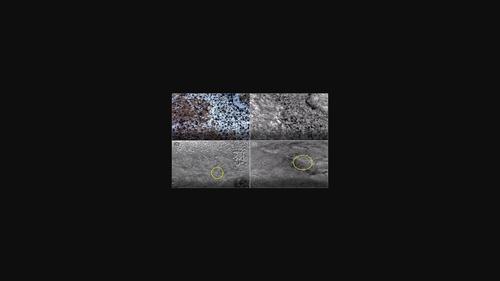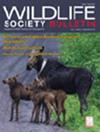估算野生毛驴丰度的比较方法
IF 1.5
4区 环境科学与生态学
Q3 Environmental Science
引用次数: 0
摘要
由于其隐秘的皮毛和崎岖的地形,获得美国西部野生毛驴(Equus asinus)丰度的精确和无偏估计是具有挑战性的。管理机构采用基于直升机的同时双观察者可视性调查(以下简称DOS)来估计毛驴的丰度;但由于检测概率的剩余异质性,DOS方法通常会产生负偏估计。因此,测试替代方法以改进当前程序是必要的。通过在人群中纳入带无线电项圈的个体,可以最大限度地减少DOS调查中的剩余异质性。另外,如果记录距离测量,也可以通过标记-再捕获距离采样(MRDS)方法减少残余异质性。航空红外(IR)测量提供了一种比直升机测量更安全的选择,因为它们可以在更高的高度飞行,并且需要更少的飞机观察员。此外,使用距离抽样方法的红外调查已被证明可以产生对野马(E. caballus)种群的准确估计。因此,我们比较了2015-2016年冬季和2016年春季在犹他州中部使用航空红外距离采样、标准DOS调查、包含无线电项圈个体检测的DOS调查和已知最小种群规模的野生毛驴种群的MRDS分析的调查结果。在冬季和春季调查中,已知的最小活驴数量分别为236头和136头。红外调查的平均探测概率为P = 0.88 (SE = 0.16),距离模型估计冬季调查有127头毛驴(95% ci = 99-175),春季调查有94头毛驴(ci = 72-134)。标准DOS调查的平均检测概率为P = 0.78 (SE = 0.09),模型生成的丰度估计值为冬季155头(CIs = 133-227),春季92头(CIs = 79-139)。在DOS调查中纳入无线电项圈个体的检测导致检测概率降低(P = 0.46;SE = 0.06),冬季和春季的丰度估计分别增加到267 (CIs = 169-571)和155 (CIs = 128-263)。标记重新捕获距离采样产生的平均检测概率P = 0.48 (SE = 0.12),在冬季和春季分别估计有282头(CIs = 178-385)和169头(CIs = 73-310)毛驴。我们的研究表明,使用标准距离采样进行的航空红外调查可以精确估计毛驴种群规模;然而,相对于已知的人口规模,估计是负偏的。小样本量限制了我们结果的推广,但基于红外的距离方法在DOS调查中没有改善。通过使用无线电项圈和标记重新捕获距离采样来考虑剩余异质性,消除了标准DOS调查的负偏差,但降低了调查精度。管理人员将需要决定,与更精确但有偏差的估计相比,无偏但不太精确的丰度估计是否更可取。本文章由计算机程序翻译,如有差异,请以英文原文为准。

Comparing methods to estimate feral burro abundance
Abstract Obtaining precise and unbiased estimates of feral burro ( Equus asinus ) abundance in the western United States is challenging due to their cryptic pelage and the rugged terrain they inhabit. Management agencies employ helicopter‐based, simultaneous double‐observer sightability surveys (hereafter denoted as DOS) to estimate abundance of burros; but the DOS method routinely produces negatively biased estimates due to residual heterogeneity in detection probability. Consequently, testing alternative methods to improve upon current procedures is warranted. Residual heterogeneity in DOS surveys can be minimized by including radio‐collared individuals in the population. Alternatively, if distance measurements are recorded, residual heterogeneity can also be reduced via a mark‐recapture distance sampling (MRDS) approach. Aerial infrared (IR) surveys offer a safer alternative than helicopter‐based surveys because they can be flown at a higher altitude and require fewer observers in the aircraft. Further, IR surveys using a distance sampling approach have been shown to generate accurate and precise estimates of feral horse ( E. caballus ) populations. Accordingly, we compared results of surveys using aerial IR distance sampling, the standard DOS survey, a DOS survey incorporating detections of radio‐collared individuals, and an MRDS analysis of a feral burro population with a known minimum population size in central Utah, winter 2015–2016 and spring 2016. The minimum number of burros known alive during the winter and spring surveys were 236 and 136, respectively. The average detection probability of IR surveys was P = 0.88 (SE = 0.16) and distance models produced estimates of 127 burros (95% CIs = 99–175) for the winter survey, and 94 burros (CIs = 72–134) for the spring survey. Mean detection probability of the standard DOS surveys was P = 0.78 (SE = 0.09), and model‐generated abundance estimates were 155 burros (CIs = 133–227) in winter, and 92 burros (CIs = 79–139) in spring. Incorporating detections of radio‐collared individuals in the DOS survey resulted in a decreased detection probability ( P = 0.46; SE = 0.06) and increased abundance estimates to 267 (CIs = 169–571) and 155 (CIs = 128–263) for winter and spring, respectively. Mark‐recapture distance sampling produced a mean detection probability of P = 0.48 (SE = 0.12) and resulted in estimates of 282 (CIs = 178–385) and 169 (CIs = 73–310) burros in winter and spring, respectively. Our study demonstrated that aerial IR surveys conducted using standard distance sampling can produce precise estimates of burro population sizes; however, estimates were negatively biased relative to the known population size. Small sample size limits generalization of our results, but the IR‐based distance approach did not improve upon DOS surveys. Accounting for residual heterogeneity through use of radio‐collars and mark‐recapture distance sampling eliminated the negative bias from the standard DOS survey but decreased survey precision. Managers will need to decide whether unbiased but less precise abundance estimates are preferable compared to a more precise, but biased, estimate.
求助全文
通过发布文献求助,成功后即可免费获取论文全文。
去求助
来源期刊

Wildlife Society Bulletin
BIODIVERSITY CONSERVATION-
CiteScore
2.10
自引率
13.30%
发文量
0
期刊介绍:
The Wildlife Society Bulletin is a journal for wildlife practitioners that effectively integrates cutting edge science with management and conservation, and also covers important policy issues, particularly those that focus on the integration of science and policy. Wildlife Society Bulletin includes articles on contemporary wildlife management and conservation, education, administration, law enforcement, and review articles on the philosophy and history of wildlife management and conservation. This includes:
Reports on practices designed to achieve wildlife management or conservation goals.
Presentation of new techniques or evaluation of techniques for studying or managing wildlife.
Retrospective analyses of wildlife management and conservation programs, including the reasons for success or failure.
Analyses or reports of wildlife policies, regulations, education, administration, law enforcement.
Review articles on the philosophy and history of wildlife management and conservation. as well as other pertinent topics that are deemed more appropriate for the Wildlife Society Bulletin than for The Journal of Wildlife Management.
Book reviews that focus on applied research, policy or wildlife management and conservation.
 求助内容:
求助内容: 应助结果提醒方式:
应助结果提醒方式:


